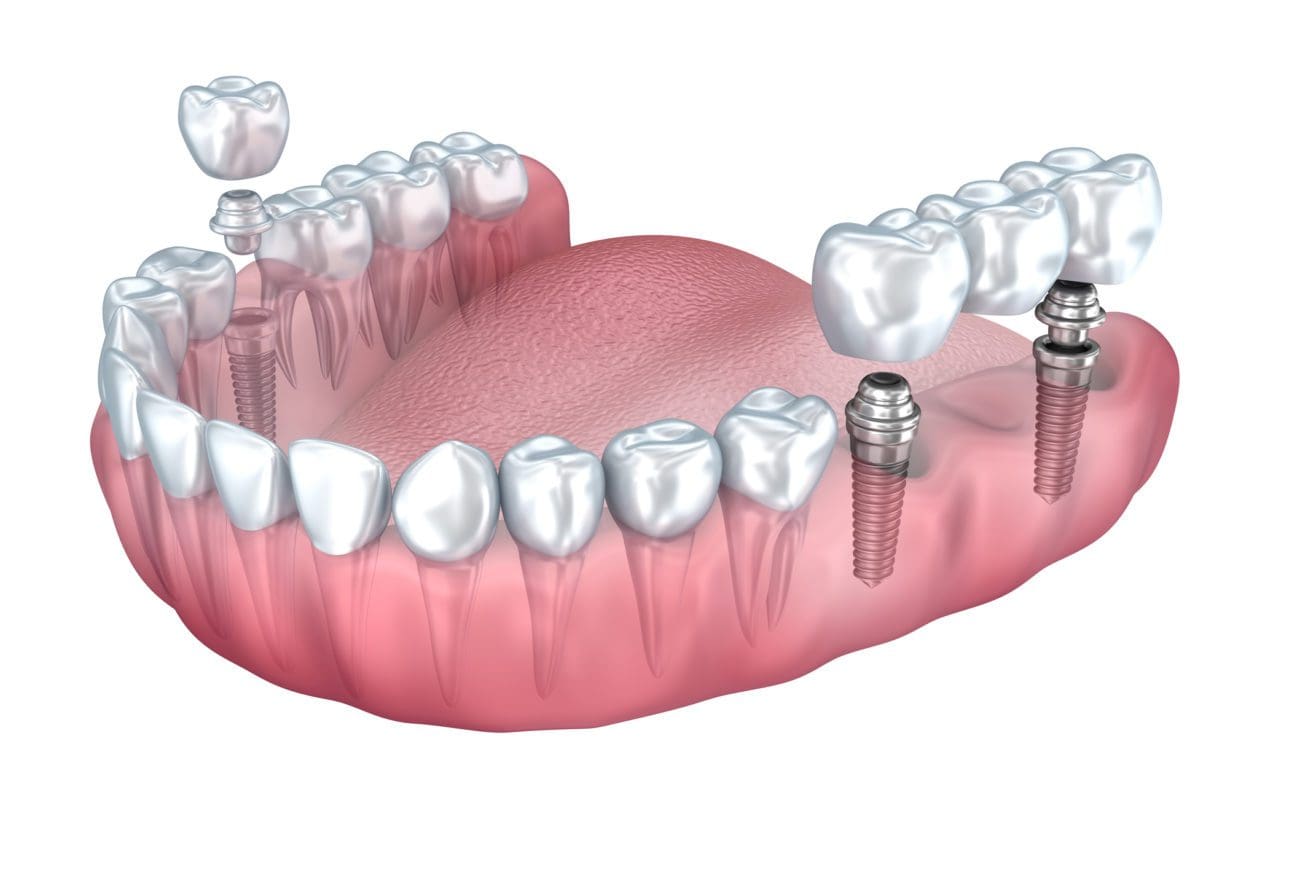Dental Sense Things To Know Before You Get This
Dental Sense Things To Know Before You Get This
Blog Article
The Main Principles Of Dental Sense
Table of ContentsGetting The Dental Sense To WorkThe Buzz on Dental SenseThe Greatest Guide To Dental SenseOur Dental Sense Statements
are clinical gadgets operatively implanted into the jaw to recover a person's ability to chew or their appearance. They provide assistance for artificial (fake) teeth, such as crowns, bridges, or dentures. When a tooth is shed due to injury or condition, a person can experience difficulties such as rapid bone loss, faulty speech, or modifications to eating patterns that lead to discomfort.Dental implant systems consist of an oral implant body and oral implant joint and may additionally consist of a joint fixation screw. Cosmetic dentistry services. The dental implant body is surgically put in the jawbone instead of the tooth's root. The oral implant abutment is usually connected to the implant body by the abutment fixation screw and extends through gum tissues right into the mouth to support the connected fabricated teeth
(https://canvas.instructure.com/eportfolios/3460980/home/transform-your-smile-with-wisdom-tooth-cavity-solutions-and-cosmetic-dentistry-services)Framework of The Oral Implant System selecting oral implants, talk with your dental provider about the prospective advantages and risks, and whether you are a prospect for the procedure. Things to consider: Your overall health is a vital variable in figuring out whether you are an excellent candidate for oral implants, for how long it will require to heal, and for how long the implant may remain in place.
Cigarette smoking may impact the healing process and decrease the long-term success of the implant. The healing procedure for the dental implant body might take a number of months or longer, during which time you generally have a temporary abutment in area of the tooth. the oral implant procedure: Carefully adhere to the dental hygiene guidelines given to you by your dental copyright.
The Dental Sense Statements
Implant failure can result in the need for an additional operation to repair or change the implant system. Restores the capacity to chew Brings back aesthetic look Helps maintain the jawbone from reducing as a result of bone loss Maintains the health of the surrounding bone and gum tissues Aids maintain nearby (neighboring) teeth steady Enhances high quality of life Damage to surrounding natural teeth throughout implant positioning Injury to the surrounding cells throughout surgical treatment, such as sinus opening Injury throughout surgery (for instance, fracture of surrounding jawbone) Poor function, such as seeming like the teeth do not bite together usually An experience that the tooth is loose or turning in place arising from a joint screw loosening Implant body failing (looseness of the dental implant body) due to systemic infection, which may be most likely in patients with unrestrained diabetics issues due to local infection in bone and periodontals supporting the implant body due to delayed healing, which may be more probable in patients that smoke Trouble cleaning up the gums around the implant, leading to poor oral hygiene Untreated gum condition Post-surgical feeling numb because of nerve impingement or damage Always alert wellness care providers and imaging professionals that you have oral implants before any magnetic resonance imaging (MRI) or x-ray treatments.
FDA is not familiar with any unfavorable occasions reported for MRI or x-ray treatments with dental implants. Oral implants systems are typically made of products that follow global agreement requirements of the International Company for Standardization (ISO) or ASTM International. These requirements have information of what makes a safe product.

An oral implant is a framework that replaces a missing tooth. With screw-like devices, the doctor inserts an implant into the jawbone, and it works as a support for a man-made tooth, called a crown. A device called a joint attaches the synthetic tooth to the oral implant. The crown is customized to fit the individual's mouth and match the shade of their teeth.
More About Dental Sense
Some individuals are not qualified for oral implant surgery. It is for dental cosmetic surgeons to operate people with: acute illnessuncontrollable metabolic diseasebone or soft cells condition or infectionIf these concerns are dealt with, an individual can have the surgical procedure. In, oral cosmetic surgeons avoid operating on people with: If individuals with any of the above check that undergo dental implant surgery, there is a higher danger of the implant stopping working.

Dental dental implant surgical procedure is a tailored process. It's not the same for everybody. However the adhering to provides a general introduction of what you can expect your dentist, dental specialist, periodontist or prosthodontist to do: Position the dental implant operatively. Provide you time to recover. Attach the blog post and last crown, bridge or denture.
Next off, your specialist will meticulously place the oral implant into your jaw. If your implant is near the front of your mouth, your dental professional will certainly make a short-lived tooth for you to put on up until you recover.
The Of Dental Sense
Your service provider can inform you what to expect in your scenario. During the recovery stage, your jawbone ought to fuse to the dental implant. This procedure, called osseointegration, is essential for security and lasting success. This process can take anywhere from 3 to nine months. Sometimes, it may take longer.
As soon as your implant heals, your dental practitioner can connect the joint (tiny adapter post) and your last remediation (crown, bridge or denture). This generally takes about one hour to complete and may call for a 2nd minor surgical treatment. You shouldn't really feel any discomfort during your dental implant treatment because your copyright will use medicine to numb your periodontals.
Report this page